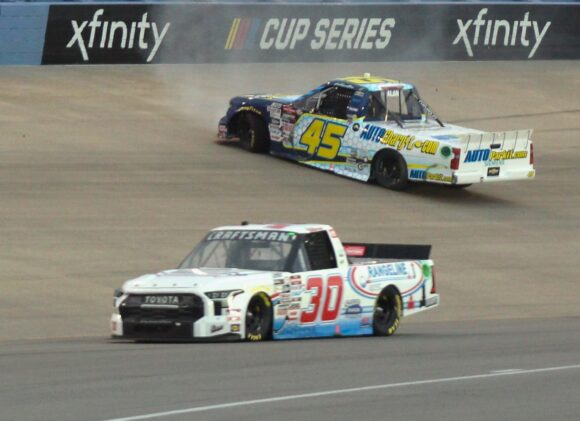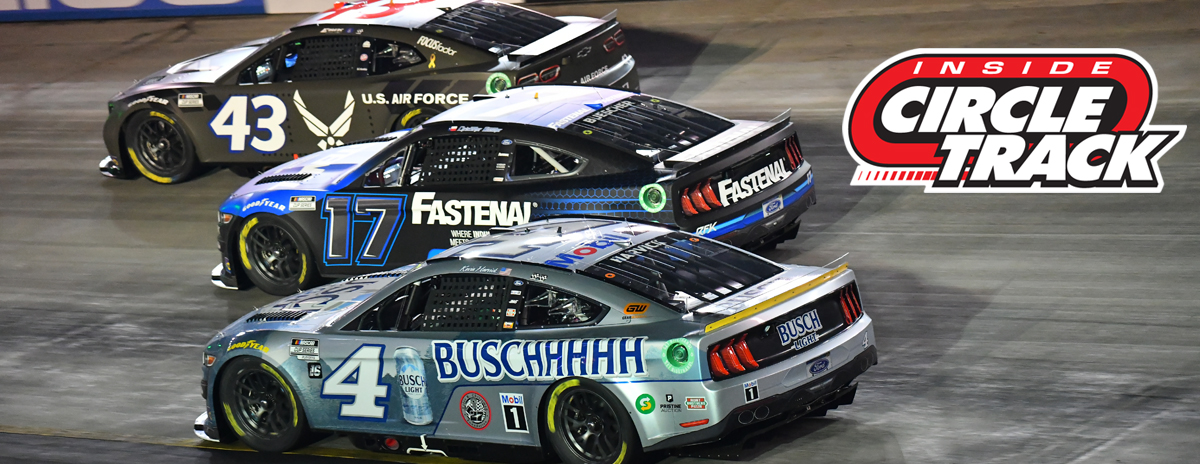
Cautions come in high numbers in Truck Series races
The NASCAR Craftsman Truck Series began in 1995 with a modest 20-race schedule mostly on tracks of one mile in length or less with a road course thrown in here and there. Many of the drivers on the tour during those early days were veteran racers such as Ron Hornaday Jr., Mike Skinner, Joe Ruttman, Jack Sprague and Butch Miller who had long toiled in the short track ranks and were then finally getting a chance to race on a national scale. Occasionally, a Cup Series driver such as Terry Labonte would even drop in for an event.
Overall, the racing was competitive and entertaining. It also gave NASCAR an opportunity to show off this new division in areas of the country which may have had less exposure to the sport such as in Colorado and Portland than was the case in the locales where the top-two divisions were more entrenched. And, NASCAR’s television partners suddenly had a new type of racing with uniquely shaped machines to market.
But somewhere along the way, the purpose of the Truck Series seemed to shift. Bigger tracks such as Homestead, Las Vegas and Fontana began to be incorporated onto the schedule. In 2000, even Daytona would be the scene of a Truck race as the series worked its way toward becoming more of a support division on extended Cup Series weekends than the stand-alone series it had begun life as.
After the new television arrangements came into being in 2001, the Trucks found themselves racing even more on Cup Series tracks as the networks desired live content, particularly during times in which the “stick-and-ball” sports were out of season.
The grizzled veterans began to more and more be replaced by young up-and-comers looking to use the series as a stepping stone toward NASCAR’s higher ranks. At the same time, the flavor of the series began to change as more brash and entitled personalities infiltrated into the driver lineups.
Fast forward to today. The Craftsman Truck Series has almost completely drifted away from its beginnings. It mostly races at the same places as the Cup Series often serving as a Friday or Saturday filler. Only four of the 2023 NCTS events were not part of a Cup Series weekend at the same track.
As a result of that modern-day scheduling, no new audiences are being reached as was the case in the early days of the series when the Trucks were more frequently separated from the Cup Series. At the same time, however, it does provide content for the television partners and perhaps serves as a lead-in to the bigger Sunday events.
Further, some of the races held this past season were, at the least laughable, and at the worst, embarrassing. In particular, the season finale at Phoenix Raceway proved to be the latter. Lack of driving ability that eventually resulted in outright intentional retaliation gave the series a black eye as drivers not involved with the instigators were affected.
Unfortunately, spins and wrecks leading to abundant cautions have come to be the norm. In races far shorter than those on the Cup Series, there were seven events in 2023 that saw ten or more yellow flags waved. It seems as if the product being put out there is not serving the purposes it was meant to serve beyond simply taking up TV air time.
Of course, the reality is that sponsorship deals and contracts with the television networks are what will determine the future of the NASCAR Truck Series. But if it is to continue into the future, the sanctioning body and the team owners need to do something to improve the product because there have been multiple instances in which it has not seemed worthy of being labeled as a top tier racing entity.
Please consider also reading:
Lucas Oil Late Models & High Limit Sprints to run companion races
Respond to this post on Twitter by following @RichardAllenIDR and @MichaelRMoats or by liking the InsideCircleTrack.com Facebook page.
Also, dirt racing fans can check out InsideDirtRacing.com for more racing content.
